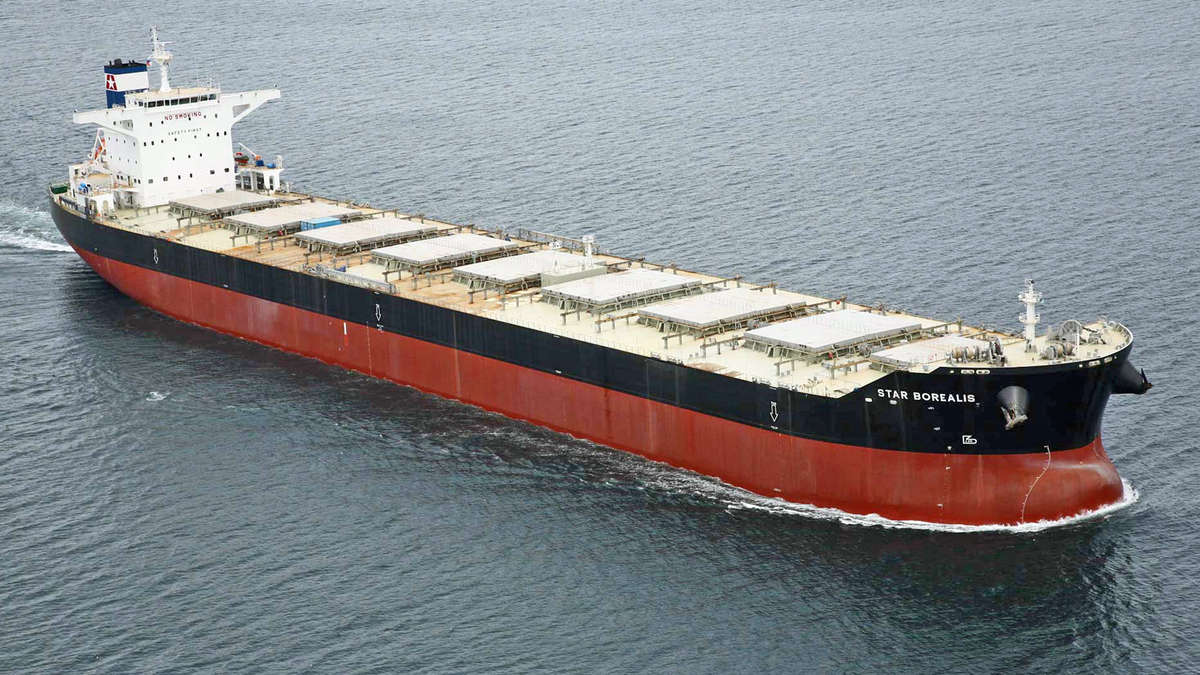If the coronavirus is brought under control in the next few months, China ramps up its industrial production and the global economy recovers in the second half, ocean spot rates for major dry-bulk cargoes — iron ore and coal — would increase.
If investors believed this, the “forward curve” of dry cargo forward freight agreements (FFAs) for Capesizes (bulkers with a capacity of around 180,000 deadweight tons or DWT) should be either holding steady or increasing.
In fact, FFA prices are falling — an ominous signal on sentiment and an important bellwether to watch for all businesses, not just ocean shipping.
On Monday, the contract for Capesizes for the April-December period closed at $10,778 per day, down 12% from the Friday close. Contracts for full-year 2021 were down 7% and those for 2022 were down 5%.
The 2021 contract was trading at $14,000 a day at the end of last month. It was down to $11,388 a day on Monday.
Panamaxes (bulkers with capacity of 65,000-90,000 DWT that largely carry coal and grain) also posted FFA declines: the April-December contract was down 8% from Friday’s close, the full-year 2021 contract declined 5% and the 2022 contract fell 3%.
Positive scenario
The hopeful scenario on a recovery in dry-bulk demand was outlined by executives of Star Bulk (NYSE: SBLK) on Monday during the Virtual Investor Forum, hosted by J Mintzmyer on Value Investor’s Edge via Seeking Alpha.
According to Star Bulk President Hamish Norton, “The thing to keep in mind is when the virus peaks, quite shortly after the peak, demand for dry bulk is likely to snap back pretty solidly. What we’re expecting is that people will make up for lost time — there might be some surprises to the upside.”

China accounts for around 60% of global dry bulk demand. Norton noted that “China coal consumption for power generation dropped very significantly, by around 36% [during the outbreak period], and the numbers are now back up to just about normal. Traffic congestion in the major cities in China is almost back to normal. So, it does look like China is getting back to business.”
“During the last week, steel production is back up to about 80% [of capacity],” explained Constantinos Simantiras, head of research at Star Bulk. “Three weeks ago, less than 50% of Chinese steel mills were active.
“We see a decrease in iron-ore stockpiles, which means steel mills are buying iron ore,” he continued, adding that “a strong stimulus has been announced.” He also pointed out that “in the past, China has taken advantage of international crises and low commodity pricing to stock up, and we expect something similar will play out in the next quarters.”
Negative scenario
The derivative market is telling a very different story. During the virtual forum, Stifel analyst Ben Nolan said, “If we are moving into a global recession, then the underlying demand for things like iron ore to make steel falls.

“If you look at the spot market in the dry-bulk business, it’s flat to maybe up slightly. But the forward curve is falling off a cliff,” Nolan said. “That is reflective of people having longer-term questions about what the underlying demand is going to be once we get beyond this.
“If we’re talking about a global recession, that means less iron ore, less coal, less demand for minor bulks. You name it. There is more concern that this is going to have a longer-lasting impact,” he warned. “People are less optimistic about a quick bounceback. And that touches every aspect of anything that’s moving by sea.” More FreightWaves/American Shipper articles by Greg Miller










